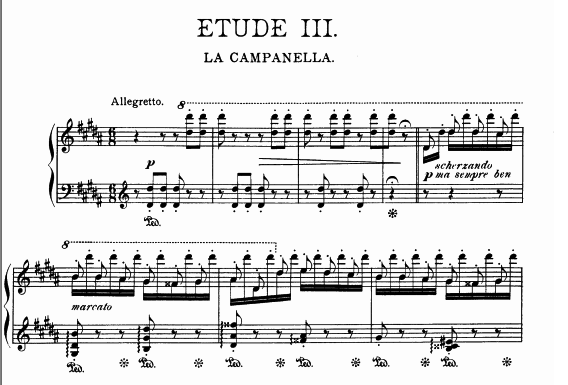Progression of Classical to Romantic Music
Introduction:
Perhaps one of the most famous classical pieces known throughout human history is Ludwig van Beethoven’s Symphony No. 5 in C Minor – many instantly recognize the initial onslaught of the booming strings. His implementation of lyrical melodies maintains the argument that he largely contributed to the transition from the Classical Era to the Romantic Era. Classical music, an era that lasted from 1750-1820, paved way for various compositional and melodic techniques that were implemented during the Romantic Era (1815-1910). Composers of the Classical Era integrated various structural techniques that established the grounds for the progression of European music within the 19th century. Some of the most notable characteristics of the Classical period include the introduction of dynamic changes (a steady variation in volume), homophonic texture (two or more parts performing simultaneously to the same rhythm), Alberti Bass (an accompaniment of a broken chord in arpeggiated form usually utilizing the root, 3rd, and 5th of a key signature), and the most important contribution: the Sonata Form.
The Sonata Form left a lasting impression on many composers within the beginning of the 19th century, which laid foundations for a more progressive and comprehensive array of pieces. Romantic Era music is largely characterized by its lyrical melodies (as opposed to a more linear compositional style of Classical music), chromaticism, and more dramatic contrasts of dynamics. These compositional techniques produced more visceral emotions that evoked the presence of independent story lines, and nationalistic marches.
This research guide is intended to elaborate on the transitional phase between the Classical period and the Romantic period, and how the progression of music influenced the European people. The general overview provides a series of sources that will provide information on the influence of Classical and Romantic music in European society. Prominent composers will elaborate more on influential composers, their compositional techniques, and their most notable pieces respective to that era. Lastly, there is a primary sources section with documentations from other anthologies and institutional websites.
General Overview :
Solomon’s Glossary of Technical Music Terms
This source provides a comprehensive listing of music terminology that was widely implemented in Classical and Romantic Era music. It provides in-depth definitions of terms and vocabulary that characterize the stylistic flair and dynamic alterations within many different compositions.
This link is excellent for individual biographical and anthological information on composers within the Classical period. Not only does it provide a comprehensive list of the pieces produced by composers, but it also presents in-depthy analyses on many of the notable works and pieces of the composer.
Similar to the Classical Composers Database, this source also provides a substantial list of the most influential and prominent composers of the Romantic period. It includes biographical information pertaining to their compositional style and influences, along with analyses on several of their most famous works and pieces.
Classical and Romantic Music (The Library of Essays on Music Performance)
David Milsom is a lecturer in music at the University of Huddersfield, and compiled this anthology of twenty-two journal articles on classical and romantic performance to represent the cultural significance of musical performance.
Milson, David. Classical and Romantic Music (The Library of Essays on Music Performance Practice). London: Ashgate, 2011.
Prominent Composers:
This section provides a series of sources that present biographical information, and analyses on the compositional works of the most prominent composers during the Classical and Romantic periods. These composers are sorted chronologically.
Wolfgang Amadeus Mozart (1756-1791)
Mozart: An Introduction to the Music, the Man, and the Myths (Print)
This book extensively explores the turbulent life of Wolfgang Amadeus Mozart, and provides insightful commentary on the technicality and compositional structures of Classical Music, and how Mozart shaped the era. It includes a guided study of the compositions within the Classical period, including opera, concerto, symphony, sonata, and string quartet.
Wates, Roye E. Mozart: An Introduction to the Music, the Man and the Myths. Boston: Amadeus Press, 2010.
Ludwig van Beethoven (1770-1827)
Beethoven: The Music and the Life (Print)
This source depicts Beethoven in a biographical light as well, and puts his achievements in historical and artistic context. The author integrates the historical, cultural, and social variables which influenced Beethoven and his subsequent masterpieces.
Lockwood, Lewis. Beethoven: The Music and the Life. Cambridge: W. W. Norton & Company, 2005.
Frédéric Chopin (1810-1849)
Chopin: Prince of the Romantics (Print)
Adam Zamoyski provides a biography that includes the social, historical, and cultural background of Chopin’s native Poland, and France, where the composer spent most of his life. Zamoyski integrates many primary sources, including close analyses of his letters, and provides context on how his personal life reflected his creative work through music.
Zamoyski, Adam. Chopin: Prince of the Romantics. New York: HarperCollins Publishers, 2010.
Franz Liszt (1811-1886)
Franz Liszt: The Virtuoso Years , 1811-1847 (Print)
This work thoroughly examines the twelve years of Franz Liszt as a piano virtuoso, his role as an orchestra conductor at many world premieres, and his emotional attachment to music. Most notably, it goes in depth how his personal life significantly influenced him to produce some of the most famous pieces during the Romantic era, such as “Liebestraum,” and “Hungarian Rhapsody No. 2.”
Primary Sources:
Ludwig van Beethoven, Beethoven’s Letters
This work is a compilation of 457 of Beethoven’s most candid letters dealing with his deafness, declining health, and the social and personal factors in his life that significantly influenced him to pursue composing his works.
van Beethoven, Ludwig. Beethoven’s Letters. New Hampshire: Dover’s Publications, 1972.
Frédéric Chopin, Chopin’s Letters
This work contains nearly 300 personal letters of Chopin as a man and musician. It depicts his perspective on 1830s and 1840s Europe, and specifically how his environment shaped him into one of the most influential Romantic composers.
